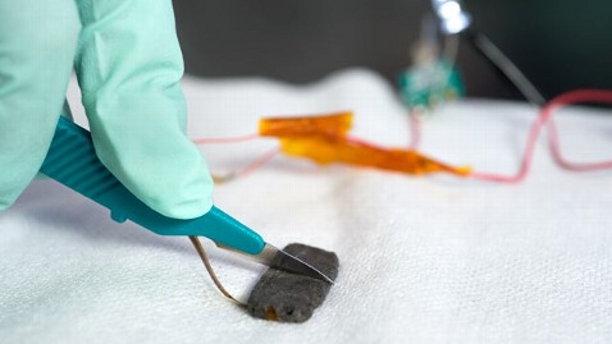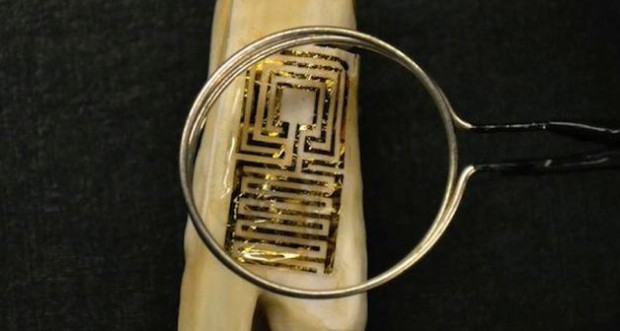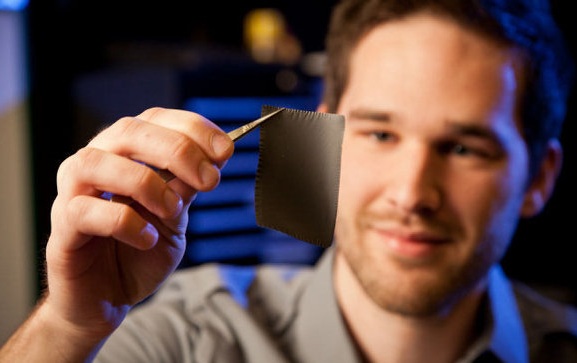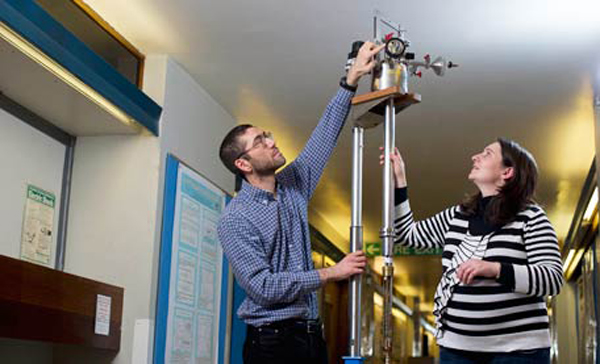
Pinch, bend and tie cables to control your electronics with 'Cord UI'
The cables in your life may just be for transferring power and data right now. But The Tangible Media Group at MIT's Media Lab are looking to change that with 'Cord UI,' allowing you to control all of your devices by tangling, twisting, pinching and pulling their attached wires.

Graphene Transistors Created by DNA
You can probably draw a lot of comparison between Graphene and Uranium; when they were each first discovered they were the wonder material that promised to unlock the mysteries of the universe. The problems came in actually figuring out how to control and utilise the materials themselves. Uranium is inherently dangerous but has the potential to be the replacement of coal and other fossil fuels. Graphene may not be dangerous but it is equally unwieldy to control and to produce.
Stanford Scientists Develop Pressure-Sensitive, Self-Healing 'E-Skin'

While work continues to be carried out on material that could ‘bruise’ to signal levels of damage (posing a future where the iPhone distorts in colour as wear and tear occurs), chemists and engineers at Stanford say they are on their way to developing a new ‘e-skin’ synthetic material that is not only sensitive to the touch, but also self-healing.
“This Is Why You Don't Buy An iPad From Walmart”
We've all come across our fair share of broken or malfunctioning electronic products, no doubt, but never has it crossed my mind at least exactly how such consumables come to be in that state. If you've ever bought an iPad from a Walmart store in Pikeville, KY however, then you likely now have ammunition to form an educated guess...
Wireless 'Tooth Tattoo' Detects Potentially Harmful Bacteria Before It Enters The Body

“People are going to be bionic.” So says Princeton University’s Michael McAlpine, a firm believer of the idea that humans, possibly within just five to ten years, will wear electronic devices all over the body for various purposes. Whether it’s integrating cardiac sensors into the body to monitor abnormal beats or in this case, fixing a flexible electronic circuit atop tooth enamel to detect potentially-harmful bacteria before it ever gets the chance to enter the body.
Scientists Invent Electronic Circuits That Dissolve In The Body

Scientists based at the University of Illinois have developed ultra-thin electronic devices that, after an initial latency period, simply melt away into the body. Described in the journal Science, the technology has already been used to heat a wound in order for it to remain infection-free from bacteria.
You Could Soon Charge Your Gadgets Through Touch Alone With ‘Power Felt’

Imagine being able to charge your energy-sapping smartphone simply by holding it in your palm. Sound implausible? Not according to a team of researchers at Wake Forest University’s Centre for Nanotechnology and Molecular Materials. Led by Professor David Carroll, they’ve developed a new material, named ‘Power Felt’, that can convert wasted body heat into an electrical current.
'Wearable' Tech One Step Closer To Reality After Material ‘Breakthrough’

Imagine having a smartphone interface on your sleeve, or a touch-screen MP3 player carefully woven into the fabric of your t-shirt. Wearable technology is getting ever nearer to becoming reality after a team of researchers from the University of Exeter revealed an innovative new material adapted from graphene that they’re calling ‘GraphExeter’ (you see what they did there?) and what they claim is, being just one atom thick, “the most transparent, lightweight and flexible material ever for conducting electricity.”
LG Reveals World's Largest OLED TV At Just 4mm Thick

We're quite the keen observers of advances in TV technology here at NRM. From heavy investment in the 3D market and glasses-free 3D, to ever larger, smarter, thinner and more energy efficient sets. LG Electronics has revealed that it is planning to unveil the “world's largest” OLED TV at this year's Consumer Electronic Show (CES) in Las Vegas, beginning January 10.

